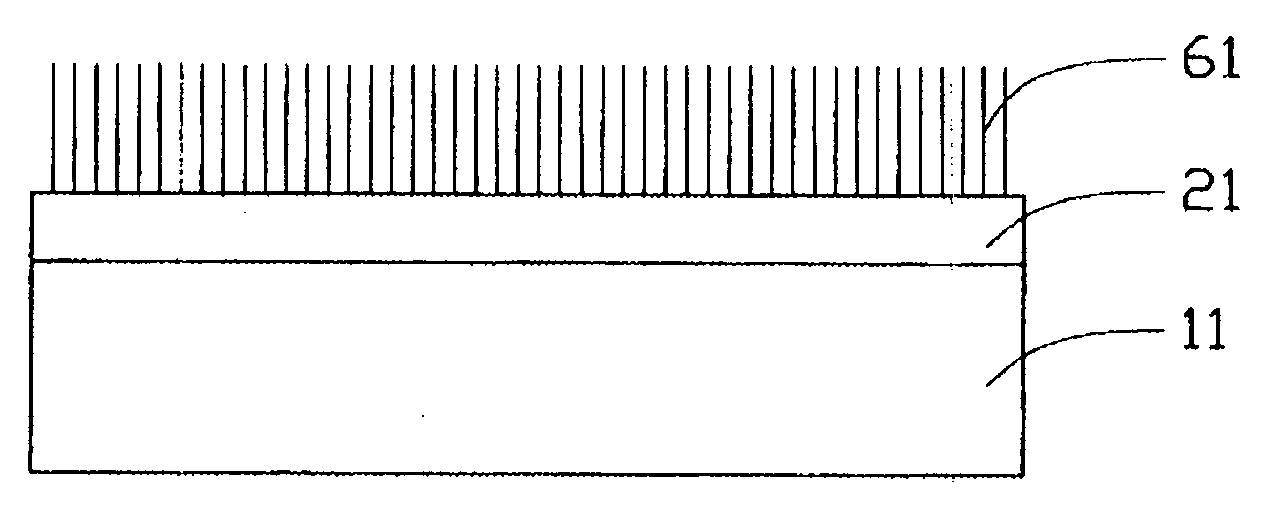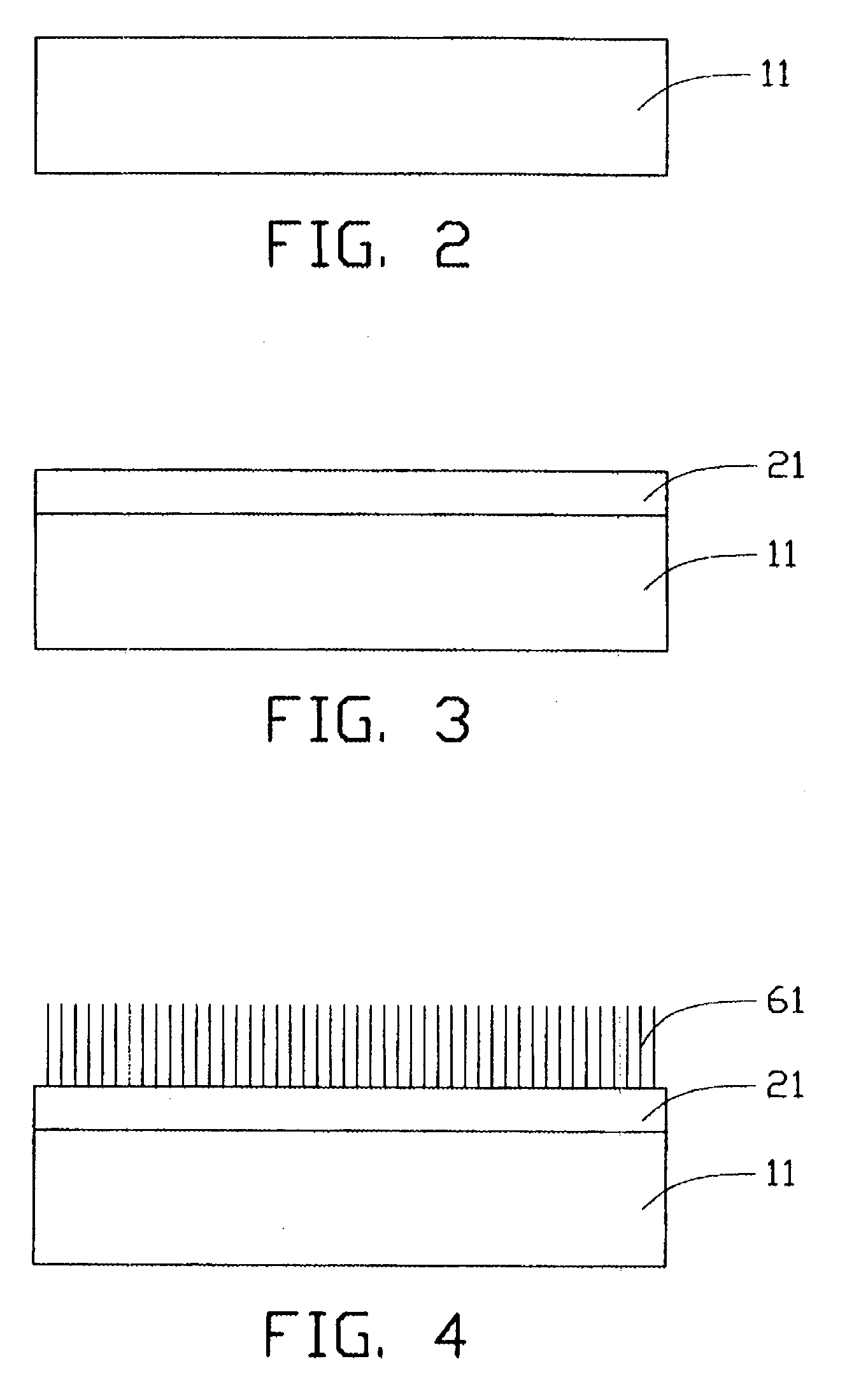Carbon nanotube array and method for forming same
a carbon nanotube and array technology, applied in the direction of polycrystalline material growth, crystal growth process, transportation and packaging, etc., can solve the problems of complex purification process, low yield of vaporization method, and inability to meet the requirements of vaporization method
- Summary
- Abstract
- Description
- Claims
- Application Information
AI Technical Summary
Benefits of technology
Problems solved by technology
Method used
Image
Examples
Embodiment Construction
[0021] A preferred method of forming a carbon nanotube array according to the present invention will be described with reference to the flowchart of FIG. 1. In the flowchart, essential steps for forming the carbon nanotube array are shown in solid-line boxes, while optional steps are shown in dashed-line boxes.
[0022] Referring also to FIGS. 2, 3 and 4, a smooth substrate 11 is first provided (step 10). The substrate 11 can be a P-type silicon wafer, an N-type silicon wafer, an intrinsic silicon wafer, or a silicon wafer with a film of silicon oxide thereon. In the preferred method, a P-type silicon (100) wafer with an 800 nm thick thermal-oxidized layer thereon is used as the substrate 11. The substrate 11 has a diameter of 2 inches and a thickness of 350 micrometers. The substrate 11 is polished to obtain a smooth surface thereon. A metal catalyst layer 21 is deposited on said surface of the substrate 11 by electron beam evaporation, thermal evaporation or sputtering. The catalyst ...
PUM
| Property | Measurement | Unit |
|---|---|---|
| Temperature | aaaaa | aaaaa |
| Fraction | aaaaa | aaaaa |
| Fraction | aaaaa | aaaaa |
Abstract
Description
Claims
Application Information
 Login to View More
Login to View More - R&D
- Intellectual Property
- Life Sciences
- Materials
- Tech Scout
- Unparalleled Data Quality
- Higher Quality Content
- 60% Fewer Hallucinations
Browse by: Latest US Patents, China's latest patents, Technical Efficacy Thesaurus, Application Domain, Technology Topic, Popular Technical Reports.
© 2025 PatSnap. All rights reserved.Legal|Privacy policy|Modern Slavery Act Transparency Statement|Sitemap|About US| Contact US: help@patsnap.com



